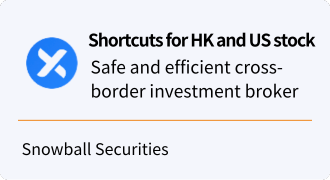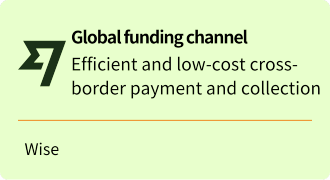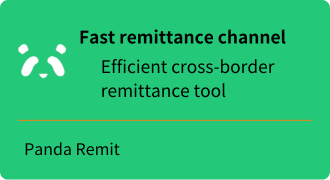Hong Kong IPO Guide: Essential Subscription Rules & Tips
[DISCLAIMER] This article is for educational and informational purposes only and does not constitute investment advice. Readers should consult with qualified financial professionals before making any investment decisions.
Have you ever watched Hong Kong IPOs surge 30%, 50%, or even double on their first trading day, feeling curious but unsure how to participate? Or worried that "IPO subscription" sounds too complex and afraid of making costly mistakes? Don't worry - as someone who's navigated financial markets for over a decade, I'll break down all the ins and outs of Hong Kong IPO investing in simple terms. This article will transform you from a Hong Kong IPO novice into a rules expert, and in the next piece, we'll discuss practical strategies.
Target Audience: If you're curious about Hong Kong IPO investing but concerned about risks, wanting to systematically understand subscription rules but can't find reliable guidance, this article is crafted for you.
What is Hong Kong IPO Investing? My Ten-Year Market Observations
Hong Kong IPO investing, simply put, is participating in Hong Kong new stock subscriptions. It's similar to mainland China's "new stock applications" but with more investor-friendly rules. I've been following the Hong Kong market since 2013, witnessing wealth creation stories from Kingsoft back then, to later successes like Xiaomi and Meituan, and recent new energy and biotech stocks.
What makes Hong Kong IPO investing most attractive? One word: stability. Unlike A-share IPOs that require market capitalization allocation and often result in no allocation, Hong Kong IPOs follow a "one lot per person" golden rule - if you apply for subscription, you'll basically get at least one lot of shares. It's like queuing for limited edition products; while you can't guarantee getting many, everyone gets their share.
Hong Kong markets price IPOs relatively rationally. While price drops below issue price do occur, quality IPOs typically rise 10%-30% on their first day. Based on my analysis of 2020-2023 data, approximately 70% of IPOs had positive returns on their listing day - quite decent odds.
Ⅰ. Hong Kong IPO Subscription Rules: Core Mechanisms Explained
1.1. "One Lot Per Person" Guarantee Mechanism
The core rule of Hong Kong IPO investing is the "one lot per person" guarantee allocation. This mechanism's design philosophy is simple: give every retail investor a fair chance to participate.
Think of it like school cafeteria meal distribution - whether you're at the front or back of the line, everyone's guaranteed a basic meal. Whether you can get extra portions (additional shares) depends on luck.
Specifically:
- First Round Allocation: All valid applicants receive priority allocation of 1 lot of shares
- Second Round Allocation: Remaining shares are distributed via lottery to investors who applied for multiple lots
1.2. Excess Subscription and Clawback Mechanism
When an IPO becomes too popular and over-subscribed, Hong Kong has a thoughtful "clawback mechanism":
- 15x over-subscription: 5% clawed back from institutional placement to retail
- 50x over-subscription: 10% clawback
- 100x over-subscription: 20% clawback
It's like adding seats at a popular concert - originally 90% of tickets go to VIPs (institutions) and 10% to general audience (retail), but if too many regular folks are queuing, organizers allocate more VIP seats to everyone.
1.3. Group A and Group B Allocation Differences
Hong Kong IPO subscriptions typically divide into two groups:
- Group A: Investors with subscription amounts under HK$5 million
- Group B: Investors with subscription amounts of HK$5 million or above
Groups A and B usually each receive half of the public offering shares. This design ensures both large and small investors have relatively fair opportunities. It's like dividing cake equally between two tables of diners - one table has regular eaters (Group A), the other has big appetites (Group B). Despite vastly different numbers of people, they get roughly the same cake size.
Ⅱ. Hong Kong IPO Subscription Practice: Step-by-Step Guide
2.1. Account Setup
To participate in Hong Kong IPO investing, you need:
-
Hong Kong Stock Connect Account: Suitable for most mainland investors
- Average daily assets of RMB 500,000 over the past 20 trading days
- Open through mainland brokers, relatively simple operation
-
Broker Account with Hong Kong IPO Features: More choices, potentially lower fees
- Internet brokers like Tiger, Snowball Securities are popular
- More complex account opening, but broader IPO selection
2.2. Detailed Subscription Process
Step 1: Information Gathering Whenever there's an upcoming IPO, I do these things first:
- Download the prospectus (though thick as a brick, at least get the gist)
- Monitor price range and subscription timeline
- Research company fundamentals and industry outlook
Step 2: Develop Subscription Strategy
- Conservative: Apply for 1 lot, ensure basic allocation
- Active: Apply for 5-10 lots, compete for additional shares via lottery
- Aggressive: Large applications, but calculate funding costs
Step 3: Submit Application
- Operate through broker platform during subscription period
- Choose cash subscription or margin financing (孖展/margin)
- Margin financing can amplify subscription amount but requires interest payments
- Funds will be frozen until subscription results are announced
Step 4: Await Results
- Results typically announced in 3-7 business days
- Unallocated funds automatically returned
- Allocated shares tradeable on official listing day
2.3. Subscription Strategy Selection
Based on my experience, different investor types should adopt different strategies:
Novice Investors: Recommend applying for 1 lot
- Controllable risk, almost 100% chance of getting 1 lot
- Short fund lock-up period, low pressure
- Suitable for learning and gaining experience
Experienced Investors: Consider moderately increasing subscription amount
- Increase lots within Group A range (under HK$5 million)
- Chance to get more shares through lottery
- Need to balance funding costs with expected returns
Well-Funded Investors: Consider entering Group B
- Subscription amounts reaching HK$5 million or above enter Group B
- Fewer Group B participants, relatively more share allocation
- But consider opportunity costs of large capital amounts
Ⅲ. Margin Financing (孖展): A Double-Edged Sword for Capital Amplification
3.1. What is Margin Financing
"孖展" is a unique Hong Kong market term, from the Cantonese transliteration of English "Margin," meaning margin financing - borrowing money from brokers to subscribe to IPOs. It's like a mortgage when buying property: you put up some money as collateral, and the broker lends you more funds to increase your subscription amount.
3.2. Advantages of Margin Financing
Improve Allocation Chances: Hong Kong follows a "subscribe more, get more" mechanism, so increasing subscription amounts can significantly improve allocation rates.
Capital Leverage Effect: Theoretically, quality IPOs can achieve 9x financing ratios, meaning HK$1 million principal can finance HK$9 million.
3.3. Risks of Margin Financing
- Financing Costs: Whether allocated or not, financing interest must be paid, with annual rates typically 2%-6%.
- Price Drop Risk: If allocated shares drop below issue price, high leverage can easily lead to margin calls, potentially wiping out investors.
- Forced Liquidation Risk: If share prices drop significantly after allocation, brokers may force liquidation to limit losses.
Ⅳ. Five Major Pitfalls Hong Kong IPO Beginners Often Fall Into
First Pitfall: Blindly Chasing Hot Sectors
I've seen too many investors blindly participate in all related IPOs when certain industries get hot. When new energy vehicle concepts were hottest in 2021, some friends applied for every automotive IPO and stepped on several landmines.
Avoidance Guide: Even for IPO investing, conduct basic company research - at least understand the company's main business and competitive advantages.
Second Pitfall: Ignoring Price Drop Risks
While Hong Kong IPOs have "one lot per person" guarantees, this doesn't mean you won't lose money. During poor market conditions, price drop rates can exceed 50%.
Avoidance Guide: Set reasonable stop-loss points. If IPOs drop 5%-10% below issue price after listing, consider timely stop-losses.
Third Pitfall: Poor Capital Management
Some investors use all their funds for IPO applications to participate in hot IPOs, missing other investment opportunities.
Avoidance Guide: IPO funds shouldn't exceed 20%-30% of your investment portfolio. Reserve ammunition for other investment opportunities.
Fourth Pitfall: Ignoring Financing Costs
Many investors are attracted by margin financing's high leverage but ignore financing costs. Even without allocation, financing interest must be paid, with annual costs potentially reaching 2%-6%.
Avoidance Guide: Carefully calculate financing costs. Only consider margin financing when expected returns clearly exceed financing costs.
Fifth Pitfall: Fee Traps
Hong Kong IPO fees vary greatly among brokers, from free to HK$100 per application. For frequent IPO applications, fees become significant expenses.
Avoidance Guide: When choosing brokers, comprehensively consider fees, service quality, and IPO coverage.
Sixth Pitfall: Ignoring Exchange Rate Risks
Hong Kong stocks are priced in Hong Kong dollars. If RMB-to-HKD exchange rates change significantly, final returns may be affected.
Avoidance Guide: Consider currency exchange when rates are relatively favorable, or use exchange rate hedging tools.
Ⅴ. 2025 Hong Kong IPO Market: Opportunities and Challenges Coexist
From current market conditions, the 2025 Hong Kong IPO market shows several characteristics:
5.1. Continued Abundant IPO Supply
Hong Kong Exchange continues optimizing listing systems. An estimated 100-150 IPOs are expected in 2025, covering technology, consumption, healthcare, new energy, and other sectors. This means investors have ample selection space.
5.2. Intensifying Market Differentiation
Not all IPOs can gain market favor. Quality companies see substantial first-day gains, while companies with average fundamentals may face cold reception or even price drops. This requires investors to be more selective.
5.3. Stabilizing Regulatory Environment
As relevant policies gradually clarify, uncertainty in Hong Kong markets is decreasing, but investor sentiment still needs time to recover.
5.4. Significant Capital Flow Impact
As an international financial center, capital flows significantly impact IPO performance. Federal Reserve policies, US-China relations, and global economic conditions all affect Hong Kong IPO performance.
Ⅵ. Risk Management: Protecting Principal in Hong Kong IPO Investing
While Hong Kong IPO investing is relatively stable, risk management remains important:
6.1. Diversified Investment
Don't put all eggs in one basket. Simultaneously participate in multiple IPOs from different industries to effectively spread risk.
6.2. Position Control
Recommend single IPO investment amounts not exceed 5% of investable assets, with total IPO funds not exceeding 30%.
6.3. Timely Stop-Losses
Set clear stop-loss standards. For example, consider exiting when prices drop 8%-10% below issue price to avoid deep losses.
6.4. Focus on Fundamentals
Even for IPO investing, pay attention to company fundamentals. Avoid participating in companies with poor fundamentals.
Ⅶ. Practical Tool Recommendations: Making Hong Kong IPO Investing More Efficient
7.1. Information Gathering Tools
- Hong Kong Exchange Disclosure: Get official prospectus information
- Broker Research Reports: Understand professional analyst views
- Financial Media: Get market dynamics and trend analysis
7.2. Trading Tool Selection
Mainland Investors:
- Snowball Securities: User-friendly interface, suitable for beginners
- Huatai International: Comprehensive service, good research support
- CITIC Construction Investment International: Traditional broker, stable service
Hong Kong Local Brokers:
- Futu Securities: Internet broker, feature-rich
- Tiger Brokers: One-stop US-Hong Kong stock service
- Huasheng Securities: Relatively low fees
7.3. Analysis Tools
- Wind Terminal: Professional data analysis (institutional users)
- Flush Hong Kong Stock Connect: Retail-friendly tools
- Investing.com: Free Hong Kong stock data platform
Ⅷ. Conclusion: Find Your Suitable Hong Kong IPO Strategy
After years of practice, I've discovered that the key to Hong Kong IPO success isn't about allocation rates, but whether you can participate consistently and steadily.
Novice Investors: Recommend starting with small participation, applying for 1 lot each time, focusing on learning market patterns and individual stock analysis methods. Accumulating experience is more important than pursuing high returns.
Experienced Investors: Can moderately increase participation frequency and application lots, but establish your own stock selection criteria. Not every IPO is worth participating in.
Seasoned Investors: Should treat Hong Kong IPO investing as one component of investment portfolios, combining macroeconomic analysis and industry research to selectively participate in individual stocks.
Hong Kong IPO investing's charm lies in its relatively fair rule design. The "one lot per person" guarantee allows ordinary investors to share in new economy enterprises' growth dividends. But markets have risks, and any investment requires caution.
Remember, investment's essence is sharing excellent companies' growth, not pure speculation. When participating in Hong Kong IPO investing, spend more time researching company fundamentals and less time blindly following trends. This way, you can achieve steady long-term returns in this market.
If you still have questions about Hong Kong IPO rules or want to learn more practical techniques, welcome to leave comments for discussion. In the next article, I'll focus on analyzing how to select quality IPOs and specific subscription strategies, including my personal stock selection framework and risk control methods. Stay tuned!
Remember: Understanding rules is just the first step. Real skill lies in applying this knowledge in practice. May every investor find their own opportunities in Hong Kong markets.







